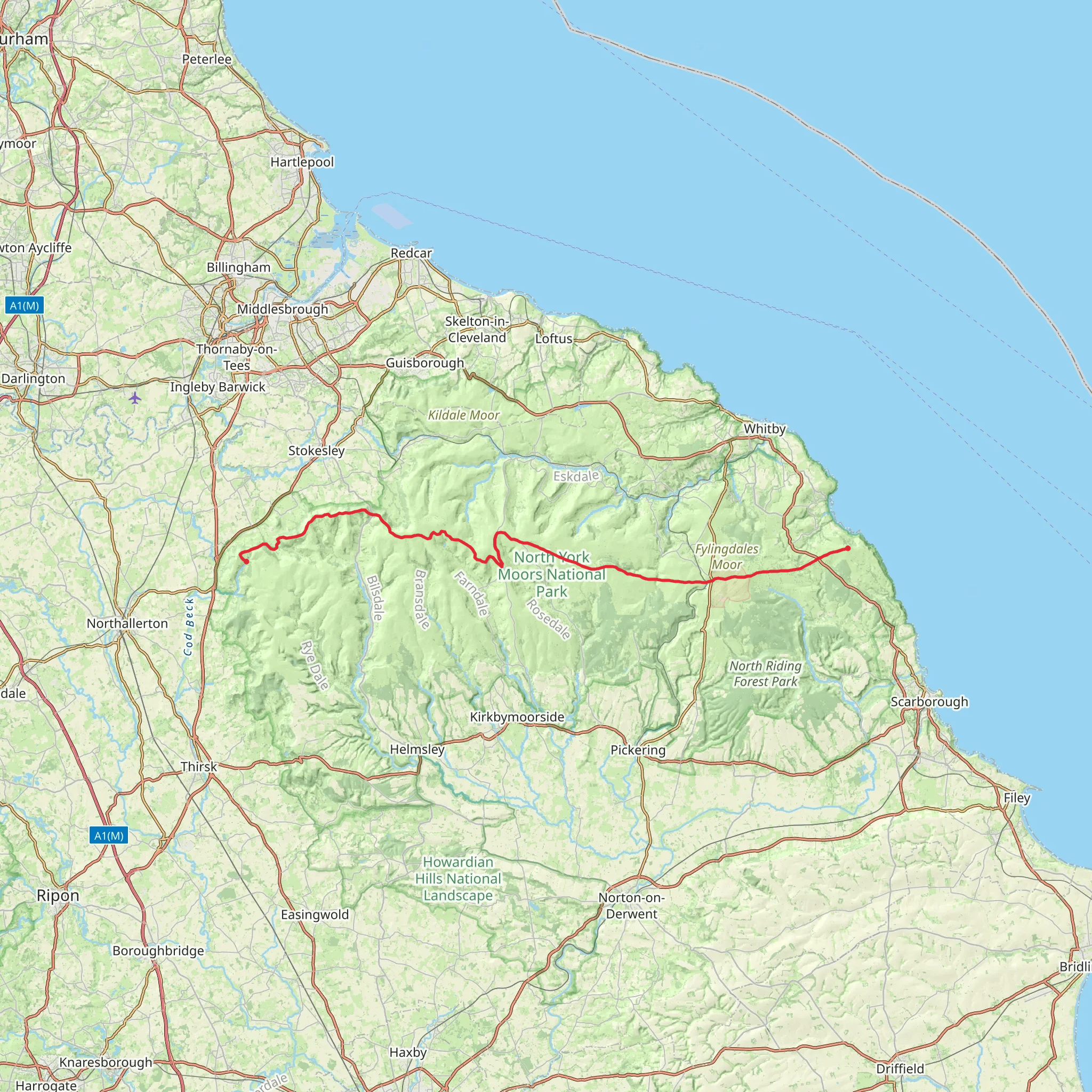Download
Preview
Add to list
More
64.7 km
~3 days
1496 m
Multi-Day
“Embark on the storied Lyke Wake Walk, a breathtaking 65-kilometer journey through the diverse and historic North York Moors.”
Spanning approximately 65 kilometers (40 miles) with an elevation gain of around 1400 meters (4593 feet), the Lyke Wake Walk is a classic long-distance challenge across the North York Moors National Park in England. This point-to-point trail begins near Osmotherley, at the western edge of the moors, and concludes by the coastal town of Ravenscar, offering a journey through a variety of landscapes and terrains.
Getting to the Trailhead
To reach the starting point near Osmotherley, hikers can drive and park at the Cod Beck Reservoir, which is a short distance from the village. For those relying on public transport, buses serve Osmotherley from nearby towns and cities, although services may be infrequent, so planning ahead is essential. Hikers can use HiiKER to navigate to the exact starting location and to follow the trail route.
Navigating the Trail
The Lyke Wake Walk traverses heather moorland, forested areas, and peat bogs, and it is marked by a series of white-topped boundary stones and waymarkers. The trail is traditionally divided into sections, with the first taking you from the trailhead to the Lion Inn on Blakey Ridge, approximately 24 kilometers (15 miles) in. This section includes a steady climb onto the moorland plateau, offering expansive views of the surrounding countryside.
Landmarks and Scenery
After the Lion Inn, the trail continues eastward, passing significant landmarks such as the Ralph's Cross, an ancient waymarker, and the Wheeldale Roman Road, a testament to the region's historical significance. The path then leads through the undulating landscape of the moors, with the highest point being around 454 meters (1490 feet) above sea level.
Wildlife and Nature
The North York Moors are home to a rich array of wildlife, including red grouse, curlew, and the rare merlin. The heather moorland, which blooms with purple flowers in late summer, is a significant habitat for these species. Hikers should also be prepared for the ever-changing weather conditions, which can transform the moors from a sunlit expanse to a misty, ethereal landscape within moments.
Historical Significance
The trail's name, 'Lyke Wake,' refers to the watch or wake over the dead ('lyke'), and the route is said to follow ancient coffin-bearing paths. The walk has a rich folklore, with traditions and superstitions attached to those who complete the crossing. It's a journey steeped in history, with every step treading paths that have been used for centuries.
Finishing the Trail
The final descent towards Ravenscar provides a dramatic conclusion to the hike, with the North Sea coming into view. Upon reaching the end, hikers can find transport links in Ravenscar to return to their starting point or onward to their next destination.
Preparation and Planning
Hikers should be well-prepared with appropriate clothing, sturdy footwear, and navigational tools, including the HiiKER app to track their progress. It's advisable to carry a map and compass as backups. The trail can be completed in one long day by the very fit, but many choose to break it into two or three days, staying at designated camping spots or nearby accommodations.
Access and Regulations
The Lyke Wake Walk is open year-round, but the best conditions are typically from May to October. Hikers should respect the Countryside Code, leave no trace, and be mindful of the sensitive moorland environment. Dogs are allowed but should be kept under control to protect ground-nesting birds.
By understanding the trail's challenges and highlights, hikers can ensure a memorable and rewarding experience across the storied landscape of the North York Moors.
What to expect?
Activity types
Comments and Reviews
User comments, reviews and discussions about the Lyke Wake Walk, England.
4.55
average rating out of 5
11 rating(s)

